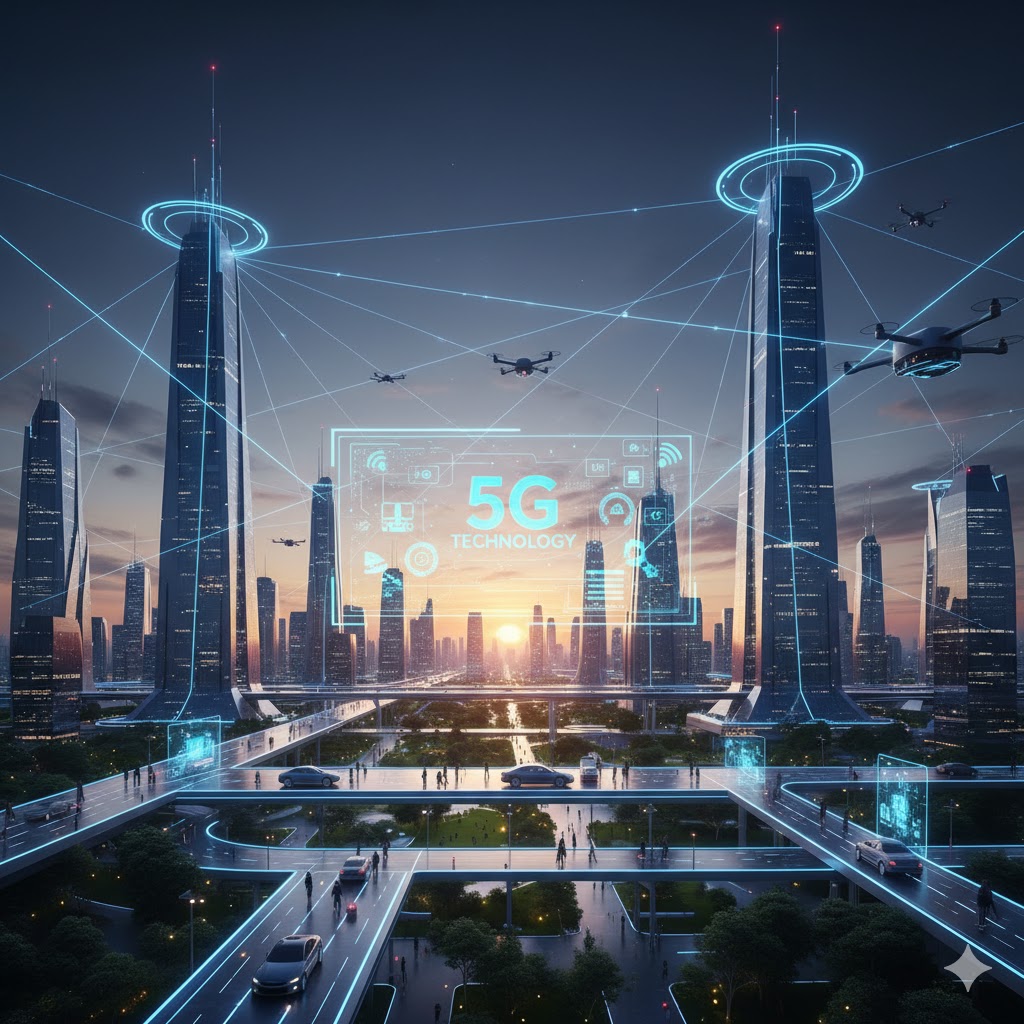A2Bookmarks India Social Bookmarking Website
Welcome to A2Bookmarks India, the premier social bookmarking platform tailored for individuals and businesses across India. Our website empowers you to effortlessly bookmark and showcase your web pages, driving enhanced online visibility and engagement. With specially curated business categories and the latest SEO-friendly tools and trends for 2025, we help elevate your digital footprint in a competitive online landscape. Join the A2Bookmarks India network today and take your website or business to new heights with ease and efficiency.


5G Technology Market: Endless Possibilities in the Realm of Connectivity researchnester.com
According to a report by 5G Americas, by 2028, there will be 7.7 billion 5G connections worldwide. 5G—a revolutionary development will change the way we connect, communicate, and do business. The 5G technology market will be a major force in the new digital landscape with its high speed, ultra-low latency, and ability to connect a massive number of devices. The 5G market has seen exceptional growth led by huge investments by the telecom operators, government spending, and consumer demand for good high-speed connectivity.
5G is the kind of transformational shift that will drive entirely new ecosystems, from smart cities and autonomous vehicles to remote healthcare and virtual immersive experiences. 5G technology answers the challenge of increased data speeds and ultra-low latency by connecting millions of devices at the same time in real-time like never before. According to Research Nester’s report, the size of the global 5G technology market is expected to exceed USD 4 trillion by 2037, led by aggressive investments from telecom operators and government programs. Going forward, in this blog, we will look at the vibrant 5G technology market, the drivers, and trends.
- Growing government initiatives
Governments around the world are establishing policies, funding, and spectrum auctions to coordinate 5G deployment activities. For instance, the U.S. government’s “race to the next generation of wireless technology” is an example of coordinated government funding and policy for the 5G market. In many jurisdictions, governments are investing directly in developing 5G infrastructure, with a primary focus on unserved or rural locations. Governments offer forward-looking regulatory frameworks, which facilitate investments in 5G networks, a sense of consumer trust, and build adoption among enterprises. Below are a few initiatives by the governments of several regions to accelerate the deployment of 5G.
- In October 2024, the strategy for the installation of private 5G networks at military locations was signed by the Department of Defense (DoD). The DoD’s modernization initiative to use commercial and private 5G networks to provide a ubiquitous, fast connection for mobile capabilities is greatly aided by this approach.
- With important government measures, India’s 5G rollout is moving quickly forward. The Ministry of Communications has implemented a number of reforms and initiatives with the goal of improving infrastructure and connectivity. Over 459,000 5G Base Transceiver Stations (BTSs) have been deployed by telecom service providers (TSPs) in India as of February 28, 2025.
- In February 2023, the State Council and CPC Central Committee released the Overall Layout Plan for the Development of Digital China to expedite the coordinated construction of gigabit optical networks and 5G networks. Furthermore, in November 2024, the General Office of the State Council and the General Office of the Communist Party of China Central Committee called for the development of intelligent networked vehicles and smart city infrastructure, as well as the advancement of 5G + Internet of Vehicles.
- Integration of 5G with artificial intelligence (AI) and edge computing
The integration of 5G, AI, and edge computing will allow for real-time analytics and decision making. 5G and AI are two technological trends that synergistically can be revolutionary in terms of their impact on network performance, efficiency, security and end-user experience. With 5G’s high-speed connectivity, ultra-low latency AI systems can be deployed more efficiently in applications that require real-time processing of data. In June 2025, MediaTek, the world’s leading fabless semiconductor company, introduced the MediaTek Dimensity 8450, a premium 5G smartphone chip.
With its agentic AI and image capabilities, this chip allows users to unleash their creativity while further advancing mobile gaming. The combination of 5G and edge computing is an important part of modern networks that expands the capabilities of networks based on the increasing demand for real-time data processing, low latency, and high bandwidth applications. Besides this, combined with the speed, low latency, and large bandwidth of 5G, edge computing is powerful and efficient. For instance, in October 2024, the EU Commission announced a spending of USD 934 million to increase 5G network availability, improve backbone networks, and lower energy consumption. The EU also wants to use the pot to fund the integration of capacities related to cloud and edge computing within sectors such as healthcare, manufacturing and transport and logistics.
- Sustainability & energy efficiency
5G is the first wireless technology developed to be energy efficient and sustainable, with a target of over 85% improvement in spectral efficiency over 4G. Led by a rapid increase in global data consumption and heightened awareness of climate impact, combining 5G with sustainability has become increasingly urgent. In March 2025, Ceva, Inc. partnered with Arm and SynaXG to provide a tailored 5G-Advanced solution that provides unmatched energy efficiency for 5G NR processing in wireless network equipment and satellites.
This solution will also provide existing and new players in the wireless infrastructure markets with a low-risk route to tackle 5G-Advanced and the evolution to 6G. Telecommunications operators are investing in green infrastructure such as implementing base stations powered by solar and wind energy. Initiatives like GSMA’s Net Zero Initiative like evolving 3GPP standards that signal sustainability, energy efficiency, and carbon emissions will be part of the core design of 5G. As we move towards 5G-Advanced, and into 6G, sustainability will be embedded into the design aspect which will be enabler of a more energy efficient and sustainable digital future.
In a Nutshell,
In this blog, we looked at how 5G technology is materially impacting all aspects of our connected world today and in the future. The 5G technology market is progressing quickly in pace, primarily following strong government support and new developments in the network infrastructure. 5G technology is giving rise to new realities, from smart cities and autonomous vehicles to novel therapies in the medical industry. Shortly, other trends, are as private 5G networks, will underpin the future of the global digital economy. To sum up, 5G technology is looming as one of the biggest technological shifts that will be key to staying competitive in an increasingly connected world.


















